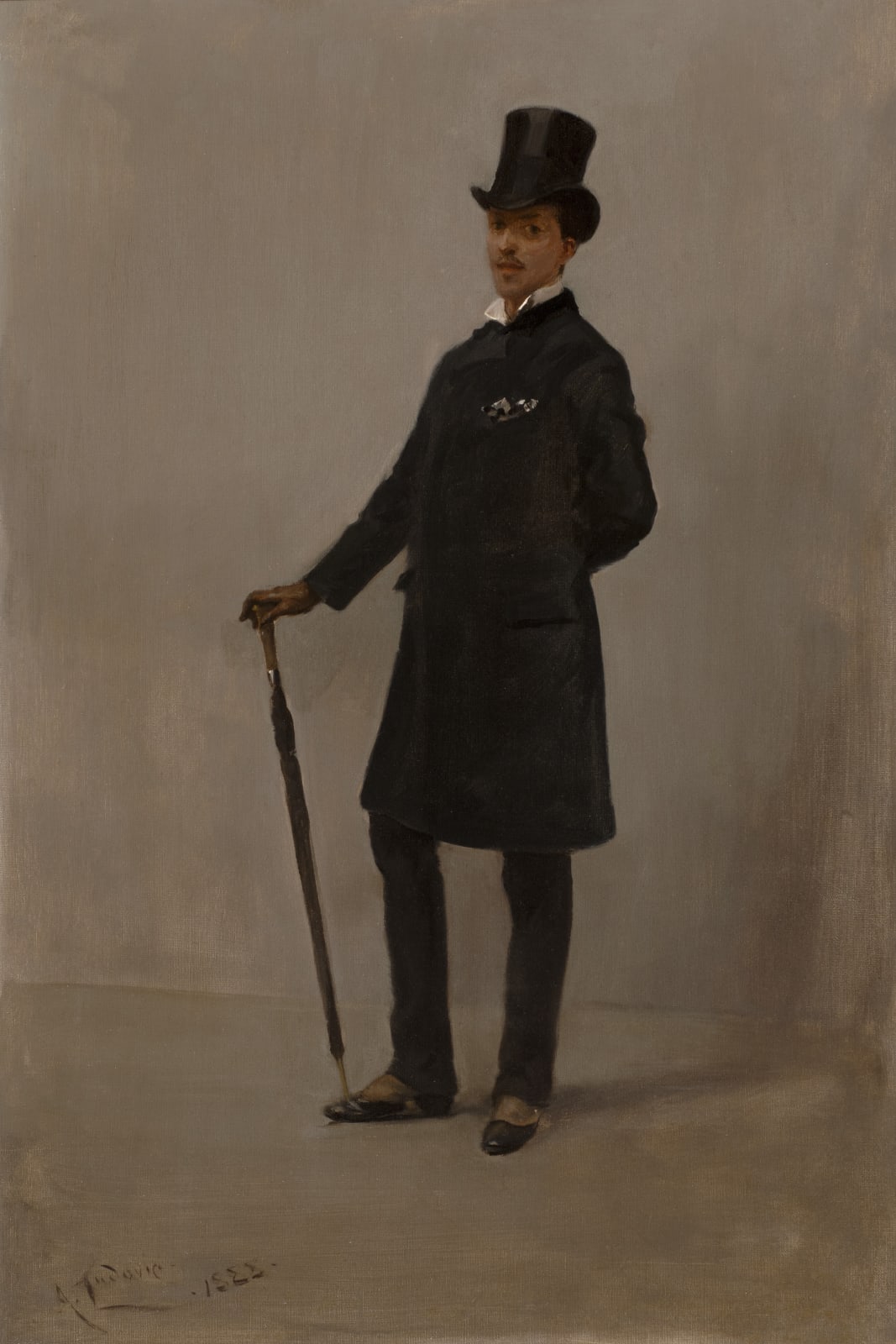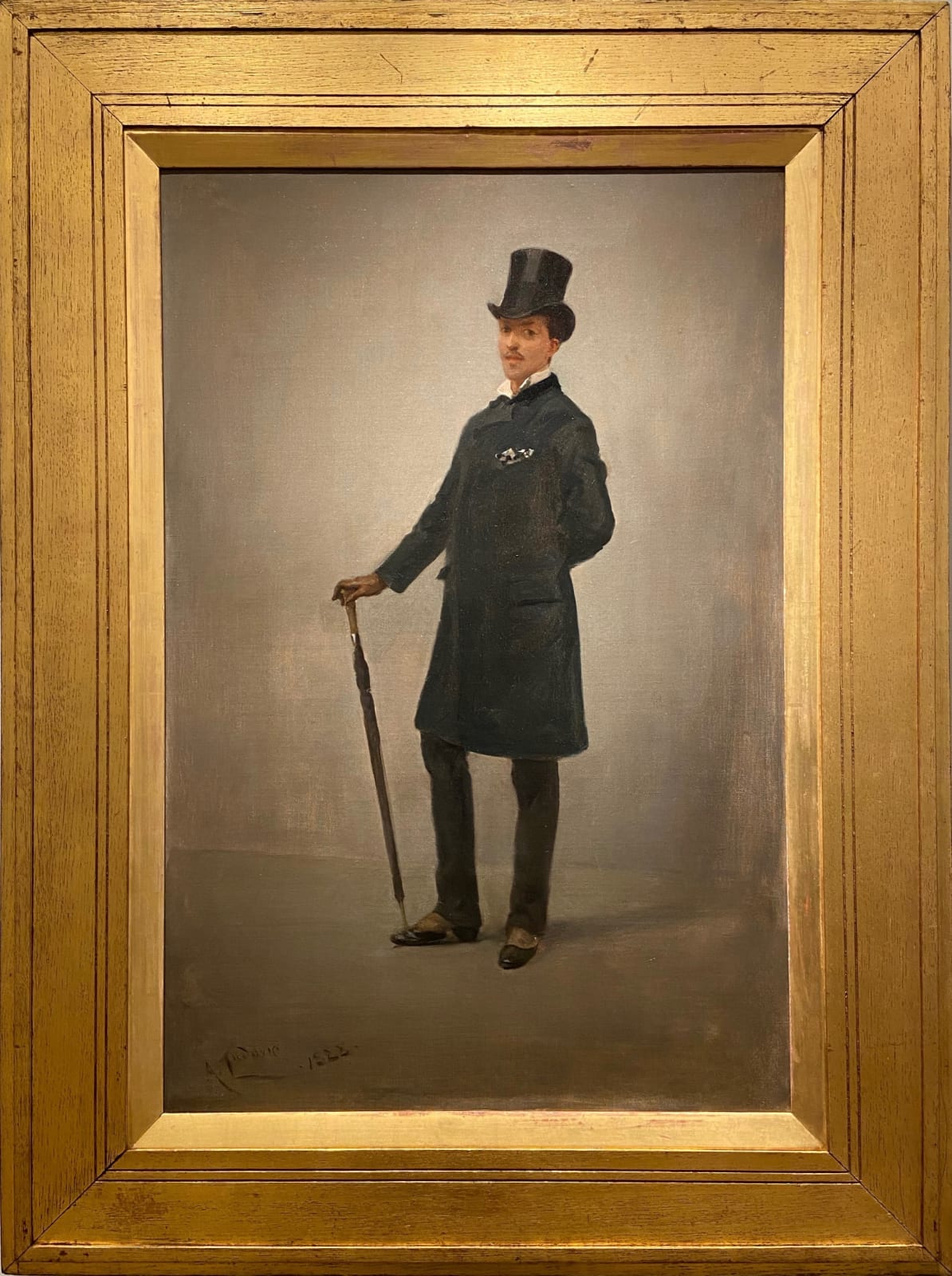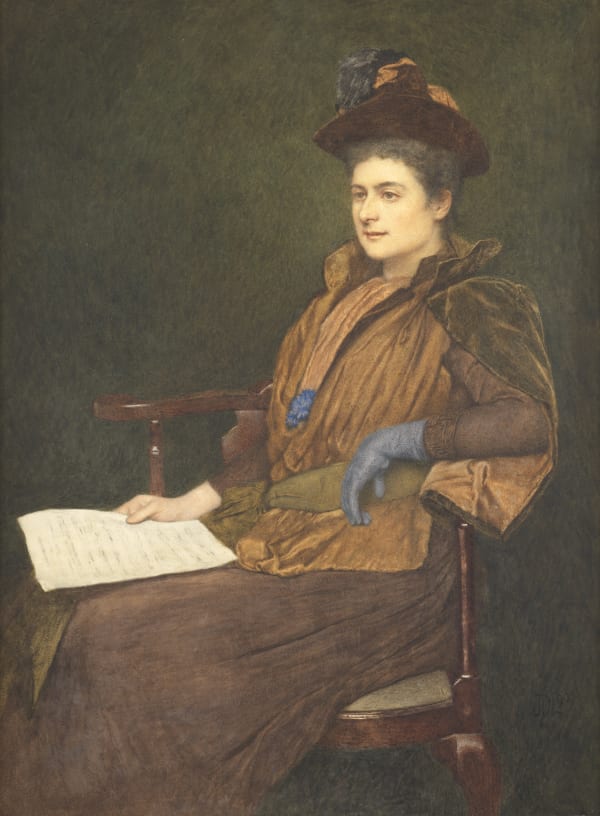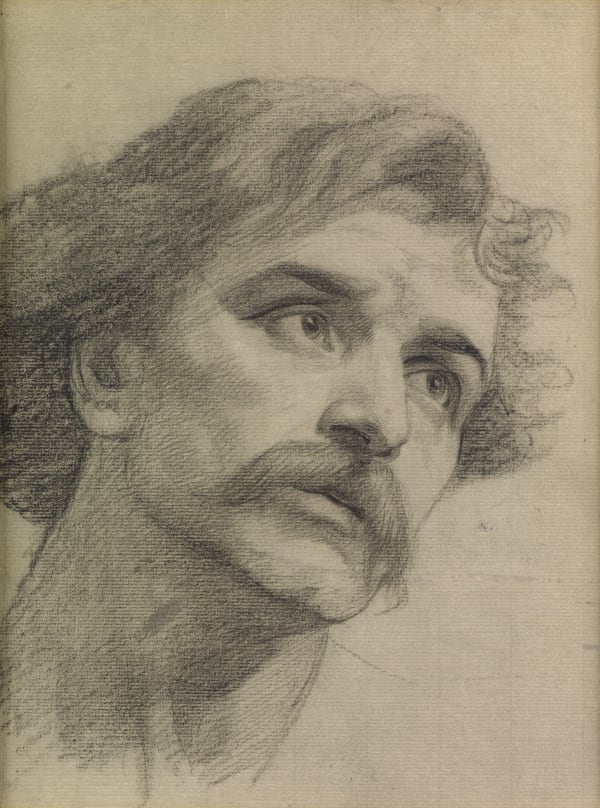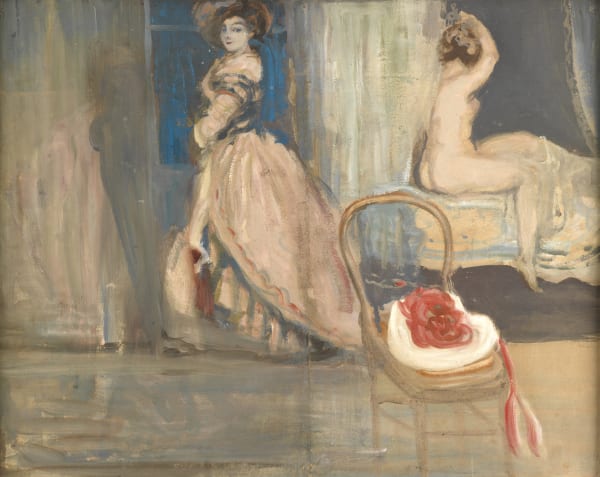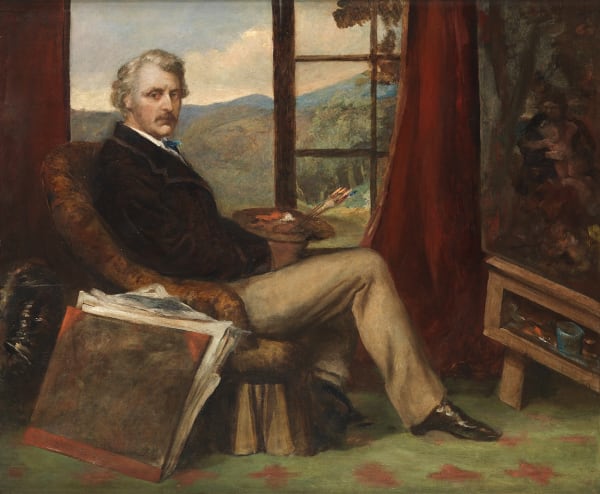Albert Ludovici, Jnr. (1852-1932)
Exhibitions
'Dots Notes Spots' by A. Ludovici, Jun., R.B.A., Dowdeswell & Dowdeswell, 1888, no 1
Literature
Albert Ludovici, The Whistlerian Dynasty at Suffolk Street, Art Journal, July & Aug. 1906
Ludovici, quoted in The Whistler Book by Sadakichi Hartmann, LC Page and Co., Boston 1910, p 224
This is a self-portrait, done in the manner of Whistler. Born in Prague of Bolognese origins, Ludovici studied at Académie Charles and the École des Beaux Arts in Paris, but left Paris when the Prussians invaded, helping his father with the decorative painting of interiors which was his main source of income. After his marriage in 1875, Ludovici settled in England and taught art to female pupils. Recollecting meeting Whistler in his studio in London in 1884, Ludovici wrote: ‘He [Whistler] was painting his dainty figure of Sarasate, and well I remember the sensation I experienced as I entered the studio, and beheld that subtle arrangement in black, which pinned me to the spot. Until then, one had always heard that a man in the conventional evening dress was not a paintable subject, but the charm of the Sarasate picture has since been fully appreciated .… He soon made me feel that I was talking to an artist of great taste and refinement, full of love for his work and a ready wit, and, in spite of an academic training just received in Paris, I became that moment devoted to him and his art’ ('The Whistlerian Dynasty at Suffolk Street', Art Journal, 1906).
Ludovici’s cosmopolitan background made him a natural ally of Whistler in his battles against the British establishment, and he soon became Whistler’s ‘trusty Aide de Camp’ in his fight with the Society of British Artists. Whistler had been elected the Society’s President in 1886 and had immediately set about making changes, reducing the selection for the annual exhibition so as to hang ‘on the line’ with plenty of space between, encouraging younger (or worse, French!) artists to send in their pictures, and passing over the ‘old hands’. The private view was attended by the gratin of London society. But Whistler went too far: when it was proposed that members should withdraw from exhibiting at the Royal Academy, there was an uproar, and in 1888 Whistler and his supporters, including Ludovici, resigned en bloc. Whistler quipped: ‘The artists have come out, and the British remain.’
Ludovici, who had completely changed his studio practice because of Whistler, was left to find new outlets, and that year, 1888, he held an exhibition at Dowdeswell’s Gallery entitled Dots Notes Spots, the title descriptive of his new manner, which, it was observed, now sprang on ‘a lighter, gayer stem, that of his own artistic individuality.’ This self-portrait, anonymised in its title Harmony in Black (Whistler’s portrait of the violinist Sarasate was called Arrangement in Black), was catalogue number 1 in that exhibition; it was Ludovici’s public declaration of fealty to his friend and hero, and a manifesto for a new way of painting.
-
 Walter Greaves (1841 - 1930)Nocturne, Battersea Reach
Walter Greaves (1841 - 1930)Nocturne, Battersea Reach -
 Richard Buckner (1812 - 1883)Self-Portrait£12,000
Richard Buckner (1812 - 1883)Self-Portrait£12,000 -
 Sir Max Beerbohm (1872-1956)James Pryde
Sir Max Beerbohm (1872-1956)James Pryde -
 Sir James Dromgole Linton (1840-1916)Agnes Ashbee£4,800
Sir James Dromgole Linton (1840-1916)Agnes Ashbee£4,800 -
 Maxwell Ashby Armfield (1882-1972)Siegfried, Act III
Maxwell Ashby Armfield (1882-1972)Siegfried, Act III -
 Frederic James Shields (1833-1911)Giuseppe Moto, Violinist£2,200
Frederic James Shields (1833-1911)Giuseppe Moto, Violinist£2,200 -
 Charles Conder (1868-1909)The Red and White HatPOA
Charles Conder (1868-1909)The Red and White HatPOA -
 Sir William Rothenstein (1872-1945)Sir Arthur Pinero, Playwright£2,800
Sir William Rothenstein (1872-1945)Sir Arthur Pinero, Playwright£2,800 -
 Albert Daniel Rutherston (1881-1953)Romance£3,600
Albert Daniel Rutherston (1881-1953)Romance£3,600 -
 Thomas Frederick Mason Sheard (1866-1921)Self-Portrait£2,200
Thomas Frederick Mason Sheard (1866-1921)Self-Portrait£2,200 -
 Charles West Cope (1811-1890)Head of a Man£1,800
Charles West Cope (1811-1890)Head of a Man£1,800 -
 Edward Robert Hughes (1851-1914)Joseph King of HampsteadPOA
Edward Robert Hughes (1851-1914)Joseph King of HampsteadPOA -
 James Hayllar (1829-1920)A wandering minstrel in a quiet squarePOA
James Hayllar (1829-1920)A wandering minstrel in a quiet squarePOA -
 Sir Coutts Lindsay (1824-1913)Self-PortraitPOA
Sir Coutts Lindsay (1824-1913)Self-PortraitPOA
The Maas Gallery, 6 Duke Street, St. James's, London, SW1Y 6BN
+44 (0) 20 7930 9511 | mail@maasgallery.com
This website uses cookies
This site uses cookies to help make it more useful to you. Please contact us to find out more about our Cookie Policy.
